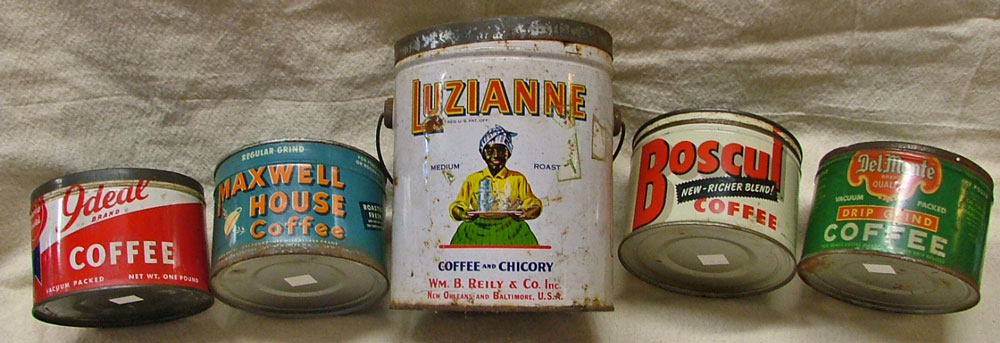Antique Coffee Tins are highly collectible…
In researching a bit more about collecting coffee tins, we learned some interesting facts. First, that collecting antique coffee tins is second only to collecting tobacco tins. But this excerpt from Collectors Weekly is most interesting:
The widespread practice of packing food in tin cans and containers was a direct result of the public’s acceptance of the Germ Theory of Disease. In the 19th century, many Americans were still willfully oblivious to the breakthrough research of Louis Pasteur and Robert Koch. People were more interested in the pitches of snake-oil salesman and their medicine shows, where cure-all elixirs and exotic balms in medicine bottles were sold. It never occurred to many of these good folk that the best way to be healthy might simply to be clean.
- In the early 1800s, cleanliness was one way for the upper classes to distinguish themselves from the working and lower classes, as only the wealthy had access to water and soap. However, as germ theory became more prevalent during the Victorian Era, it became unacceptable for the working poor to be dirty. Most food was displayed and accessed at the local five-and-dimes in communal food barrels—grimy, germ-infested hands would not do.
These days, people of means tend to dismiss canned or “processed” food as something people without access to fresh food eat. But in the late 1800s, food in tins was highly desirable. It was considered much more sanitary, and therefore healthier, than food offered in bins or barrels.
…from Collectors Weekly
The Vintage Virtue website discusses collecting coffee tins with this introduction:
The coffee tin came into being as long ago as the early 1800’s in a time when most people bought fresh green coffee beans to roast and grind fresh at home. Pre-roasted and packaged coffee became popular much later in the late 1880’s. Over the years, coffee containers were produced in many shapes and sizes; they could be square, cylindrical, rectangular, or trapezoid shaped and ranged in size from one ounce sample tins to large bins holding more than fifty pounds of coffee. Coffee came in boxes and in pails with metal handles and in addition to tin, some containers were made of cardboard and others featured paper labels over tin. The lids also can in a variety of styles that evolved other the years. The early tins had hinged lids or lids that could be pulled off. Later tins were made with pry lids, slip lids, and lids that screwed off and on, these were followed by lids that utilized keys for removal.
… from VintageVirtue.net
The advertising, as in the graphics on the tins, has also made them highly collectible. The graphics became more interesting as companies realized that making the tins reusable with very beautiful graphics added to the appeal for their product. Ah yes…. advertising!
Now that you appreciate a bit more the value of the ‘tin can’ … stop by Bahoukas Antique Mall to see the many collectible tins we have for coffee, tobacco and other products.



